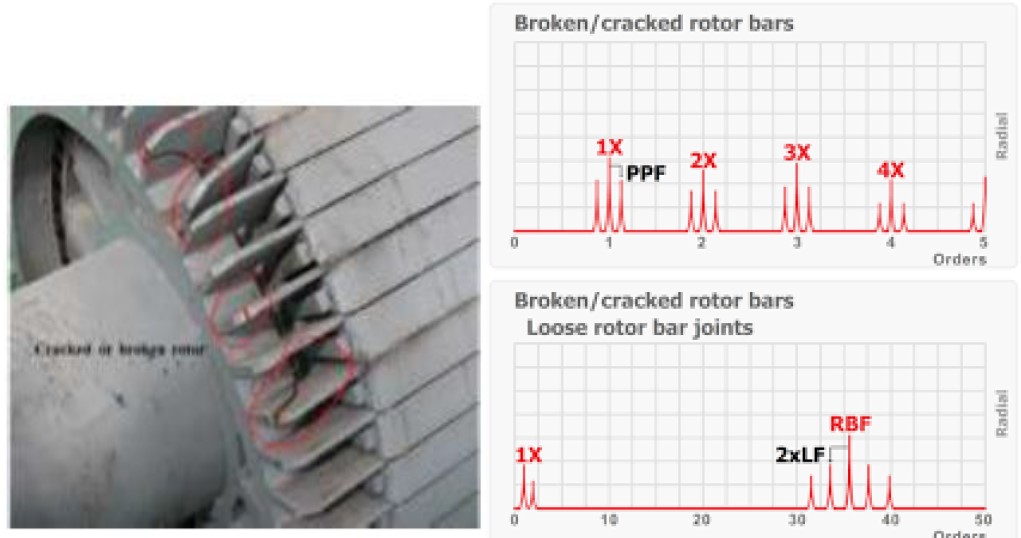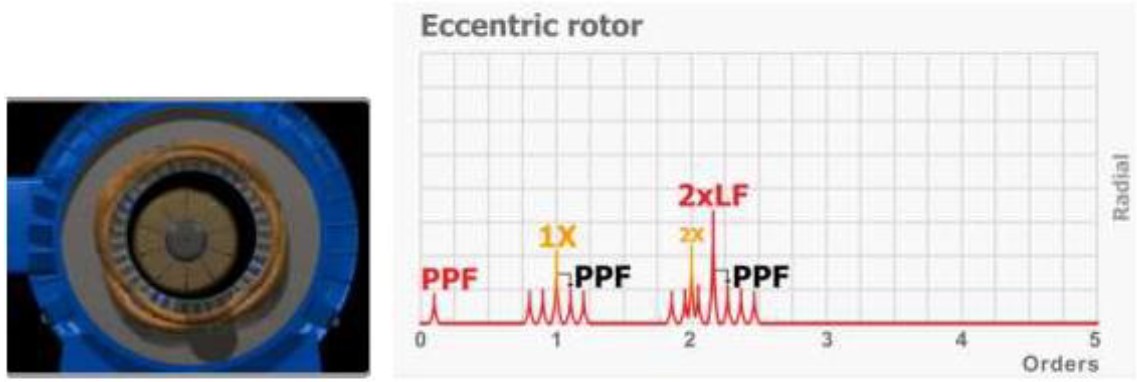Electrical problems
Vibration from electrical machinery such as motors, generators and alternators can cause mechanical or electrical problems. Some of the electrical defects can be investigated from the vibration spectrum, such as:
- Cracked / broken rotor bar
- Eccentric rotor
- Eccentric stator / soft foot
- Phase loss
- Unequal air gap between stator and rotor
Cracked/broken rotor bars
Cracked/broken rotor bars, shorted end rings or rotor blades, or loose rotor bar joints produce a series of harmonic peaks in rotation speed with Pole Passage Frequency (PPF) sidebands. Since the PPF has a very low frequency, it is necessary to use a high-resolution spectrum. Audible and visible beats also appear in the time curve. Another pattern can be observed for cracked / broken / loose rotor bars, of which there are two. Line frequency (2XLF) sidebands surrounding the rotor bar pass frequency (RBPF).
PPF = number of poles × slip frequency
Number of poles/strong> = 2 (3000 rpm) | 4 (1500 rpm) | 6 (1000 rpm)
Slip frequency = synchronized motor speed – actual speed
RBPF = Number of rotor bars × actual motor speed

Eccentric rotor
Eccentric rotors create a rotating, variable air gap between the rotor and stator that induces pulsating vibrations. A key indicator is the presence of pole-pass sidebands around 1X and 2XLF.

Eccentric stator / soft foot
Stator eccentricity creates a non-uniform stationary air gap between the rotor and stator and can occur due to the soft-feet problem. This creates a very directional source of vibration generated from a two-line frequency (100 or 120 Hz)
